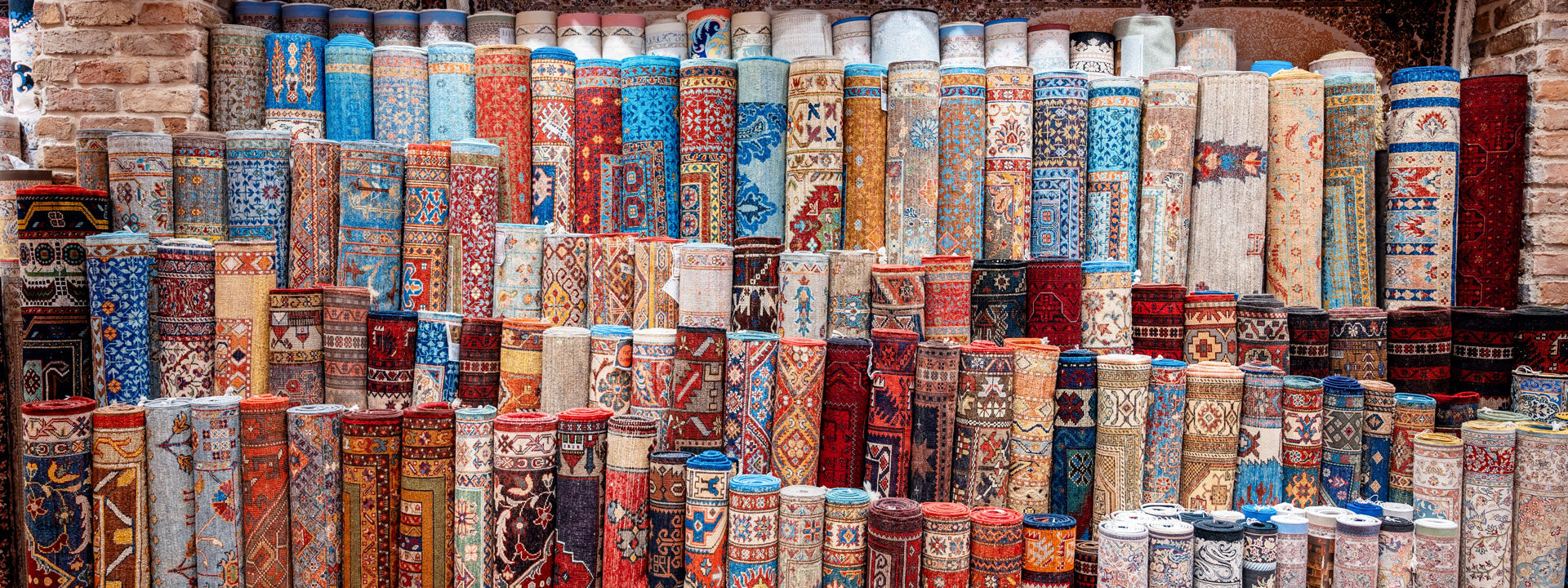
ARTEMIX COLLECTION
, by Natalia Rugs, 11 min reading time

, by Natalia Rugs, 11 min reading time
Welcome to our Artemix Collection, your ultimate destination for exquisite antique rugs. Our collection spans a diverse range of styles, including antique Oushak rugs and Afghani rugs, each piece reflecting the rich history and artistry of its origins. Whether you are in Melbourne or shopping for antique rugs online, Artemix offers an array of small antique rugs and overdyed rugs to suit any decor. Explore our curated selection of tribal rugs, Chinese Art Deco rugs, and hooked rugs to find the perfect piece for your space. With a focus on quality and authenticity, Artemix is dedicated to providing exceptional antique carpets and rugs that add a touch of timeless elegance to your home.

Rugs are renowned for their beauty, durability, and intricate designs, all of which are greatly influenced by the materials used in their creation. Here, we will explore the various materials that feature in different types of rugs.
Wool is the most commonly used material in rugs, known for its durability, softness, and ability to retain dyes well. Bokhara rugs, Kazak rugs, Qashqai rugs, and Serapi rugs are often made from high-quality wool, which ensures they withstand the test of time. Wool's natural resilience makes it ideal for areas with high foot traffic, and its insulating properties add warmth to any space.
Silk is another prized material used in the creation of rugs, particularly in Persian and Oriental rugs. Silk rugs are known for their luxurious texture and shimmering appearance, making them highly sought after. The fine threads of silk allow for intricate and detailed patterns, enhancing the rug's overall aesthetic. However, silk rugs are more delicate compared to wool and require careful maintenance.
Cotton is frequently used as a foundation material in rugs, providing a strong and flexible base for the intricate designs woven on top. It is commonly found in the warp and weft of Persian rugs, Turkish rugs, and various types of Oriental rugs. Cotton adds stability and durability to the rug, ensuring that it maintains its shape over time.
Camel hair is sometimes used in carpets and rugs, particularly those from regions where camels are prevalent. This material is appreciated for its softness and natural color, which ranges from light tan to dark brown. Camel hair rugs, such as some Moroccan rugs, have a distinctive texture and are highly valued for their unique appearance and quality.
The materials used in rugs are often dyed using natural substances, which contribute to the vibrant and long-lasting colors seen in these pieces. Natural dyes are derived from plants, insects, and minerals, providing a rich palette of colors that enhance the rug's design. The use of natural dyes is evident in blue rugs, where indigo is commonly used to achieve the desired hue.
The fibers used in rugs are frequently hand-spun, adding a unique character to each piece. Hand-spinning produces uneven threads that give the rug a more organic and authentic look. This technique is prevalent in various types of rugs, including Kazak rugs, Qashqai rugs, and Moroccan rugs, where the craftsmanship of the weaver is reflected in the texture of the finished product.
The technique used in creating rugs is a vital aspect that determines their quality, design intricacy, and overall appeal. Various methods have been developed over centuries, each reflecting the cultural heritage and craftsmanship of its origin. Here, we will explore the different techniques used in various types of rugs.
Hand-knotting is the most revered and traditional technique used in the creation of rugs. This method involves tying individual knots onto the warp threads, creating the pile of the rug. The density and quality of these knots determine the rug’s durability and intricacy. Persian rugs, Oriental rugs, and blue rugs often showcase this technique, with knotting styles such as the Persian (Senneh) knot and the Turkish (Ghiordes) knot being prevalent.
Flat weaving is another common technique, used to create rugs without a pile. This method involves interlacing the warp and weft threads to create a flat, smooth surface. Moroccan rugs and certain types of Oriental rugs often employ flat weaving techniques. The absence of a pile makes these rugs thinner and more flexible, ideal for use as wall hangings or in areas with less foot traffic.
Symmetrical knotting, also known as the Turkish knot, is a technique where the yarn is looped around two warp threads and then pulled through the center. This method is commonly used in Turkish rugs, Bokhara rugs, and Kazak rugs. The symmetrical knots result in a durable and evenly textured rug, suitable for areas with high foot traffic.
Asymmetrical knotting, or the Persian knot, is used to create highly detailed and intricate patterns. This technique involves looping the yarn around one warp thread and passing it under the adjacent warp thread. This method allows for greater flexibility in design, making it a preferred technique for Persian rugs and various types of Oriental rugs.
Hand-spinning is a technique used to prepare the fibers before weaving. The fibers, often wool, are spun by hand to create yarns of varying thicknesses. This method adds a unique texture and character to the rug. Qashqai rugs and Serapi rugs often feature hand-spun fibers, contributing to their distinctive look and feel.
The technique of dyeing the fibers using natural substances is an essential part of the rug-making process. Natural dyes are derived from plants, minerals, and insects, providing rich, lasting colors. This technique is evident in blue rugs, where natural indigo is used to achieve the blue hues, and in other carpets and rugs, where a variety of natural dyes contribute to the overall color palette.
Embroidery is a technique where patterns are stitched onto the surface of the rug. This method is less common but can be found in certain Oriental rugs and Moroccan rugs. Embroidered rugs often feature intricate designs and are highly valued for their decorative appeal.
Rug beaters are traditional tools used in the cleaning and maintenance of rugs. The technique involves striking the rug with a beater to dislodge dirt and dust, preserving the rug's integrity without damaging the fibers. This method is especially important in the upkeep of valuable rugs.
The appraisal of rugs involves a detailed examination of the materials, weaving techniques, and overall condition. Professional appraisers use their expertise to evaluate the craftsmanship, knot density, and authenticity of the rug. This technique is crucial for rug dealers, auction houses, and collectors to determine the value of a rug.
Cleaning rugs requires specialized techniques to preserve the delicate fibers and vibrant colors. Professional cleaners use gentle, hand-cleaning methods with mild detergents, ensuring that the rug's quality and design are maintained. Restoration techniques may also be employed to repair any damage, ensuring the longevity of the rug.
The weaving techniques used in different regions reflect the cultural heritage and traditional craftsmanship of those areas. For example, rugs by Doris Leslie Blau often showcase a variety of techniques from different regions, highlighting the diversity in design and construction. rugs from London, New York, and the UK also feature a wide range of weaving techniques, catering to diverse tastes and preferences.
The design of rugs is a rich tapestry of cultural heritage, artistic expression, and intricate craftsmanship. The patterns and motifs found in different types of rugs reflect the traditions and histories of the regions where they were created. Here, we explore the design elements in various types of rugs.
Geometric patterns are a hallmark of many traditional rugs. These designs often include repeating shapes such as diamonds, hexagons, and stars. Kazak rugs and Turkish rugs are known for their bold geometric designs, which create a striking visual impact. The symmetry and precision of these patterns reflect the weavers' meticulous attention to detail.
Floral motifs are a common design element in Persian rugs, Oriental rugs, and carpets and rugs. These designs often feature intricate representations of flowers, leaves, and vines, creating a lush and detailed pattern. Persian rugs for sale often showcase these elaborate floral designs, which symbolize nature and beauty.
Medallions are central design elements that serve as focal points in many types of rugs. These motifs can be circular, oval, or diamond-shaped and are often surrounded by intricate borders. Blue rugs, Bokhara rugs, and Serapi rugs frequently feature medallions, which add depth and complexity to the overall design.
Tribal and nomadic patterns are distinctive features of Qashqai rugs and Moroccan rugs. These designs often include symbolic motifs that represent the weavers' cultural heritage and life experiences. The bold and dynamic patterns in these rugs are characterized by their vibrant colors and asymmetrical designs.
Some rugs incorporate animal and human figures into their designs, adding a narrative element to the patterns. These figures can be stylized or realistic and often hold symbolic meanings. Oriental rugs and certain Persian rugs may include these motifs, reflecting the cultural stories and traditions of their creators.
The borders and edges of rugs play a crucial role in framing the central design. These elements often include intricate patterns and motifs that complement the main design. Rugs by Doris Leslie Blau, as well as rugs from London, New York, and the UK, often feature detailed borders that enhance the overall aesthetic.
The color schemes used in rugs are essential to their design. Blue rugs, for example, are known for their striking use of indigo and other blue hues. The choice of colors can convey different moods and meanings, with warm colors like red and orange symbolizing passion and energy, while cool colors like blue and green represent tranquility and harmony.
Many design elements in rugs hold symbolic meanings. For example, the tree of life motif represents immortality and growth, while the boteh (paisley) design symbolizes fertility and abundance. Understanding these symbols can provide deeper insights into the cultural significance of the rug.
The design of a rug is often influenced by the weaving techniques and regional variations. Different regions have their unique styles and methods, resulting in diverse patterns and motifs. Rugs from London, New York, and the UK, for example, may incorporate a mix of traditional and contemporary designs, catering to a wide range of tastes and preferences.
Some modern rug designs blend antique motifs with contemporary elements, creating a fusion of old and new. This approach can be seen in certain carpets and rugs, where traditional patterns are reinterpreted with modern color schemes and abstract designs.


